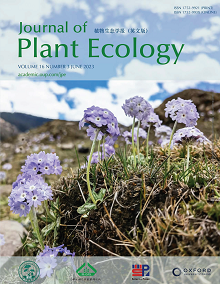Current Issue
-
 Volume 16 Issue 3
Volume 16 Issue 3
Plants of Primula atrodentata in the Shergyla Mountains, Tibet, China. Primula atrodentata is widely distributed in alpine regions of southwest Asia. In the alpine region of southwest China, the species occurs in meadows and the edges of swamps, wet forests and streams along altitude from 3100 to 4500 m. This species is heteromorphic, with most populations having individuals of two morphs, known as long-style morph and short-style morph, while some populations also have homostylized individuals. Usually, the reproductive success of this species depends on pollinators, and the variation of pollinator assemblages will affect its pollination, making it ideal for studying the co-evolution of plant breeding system and pollinators. Photo taken by Yin-Mei Ma. See Ma et al. in this issue.
IF: 3.9
CiteScore: 5.7
CiteScore: 5.7
Editors-in-Chief
Yuanhe Yang
Bernhard Schmid
Yuanhe Yang
Bernhard Schmid
CN 10-1172/Q
ISSN 1752-9921(print)
ISSN 1752-993X(online)
ISSN 1752-9921(print)
ISSN 1752-993X(online)







